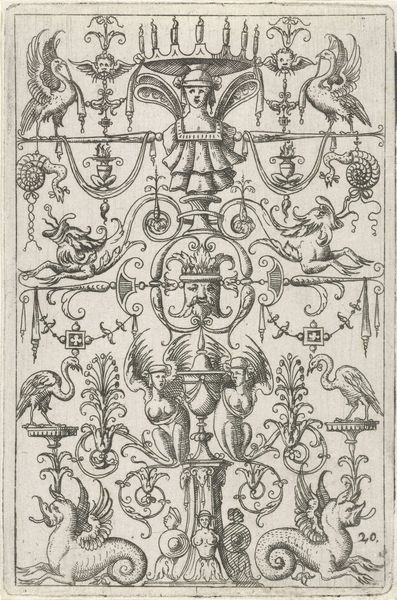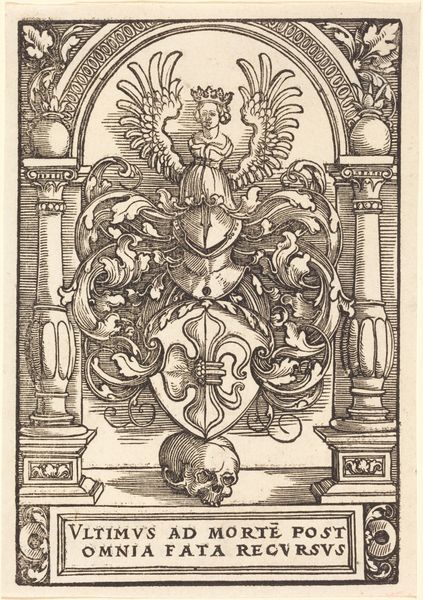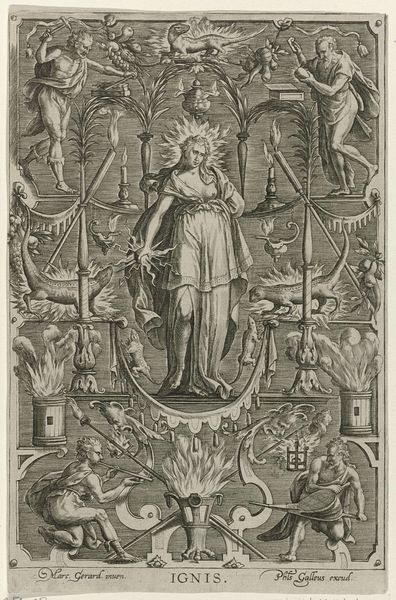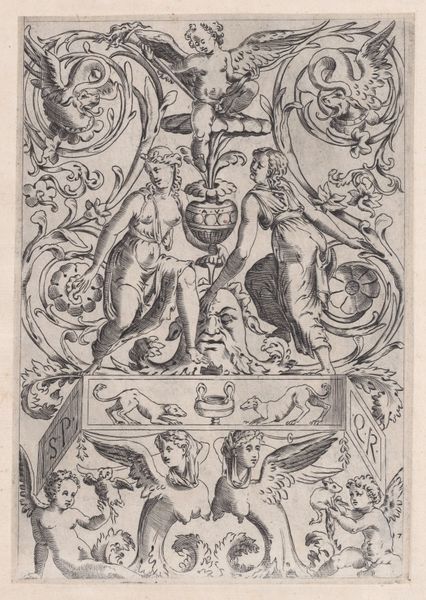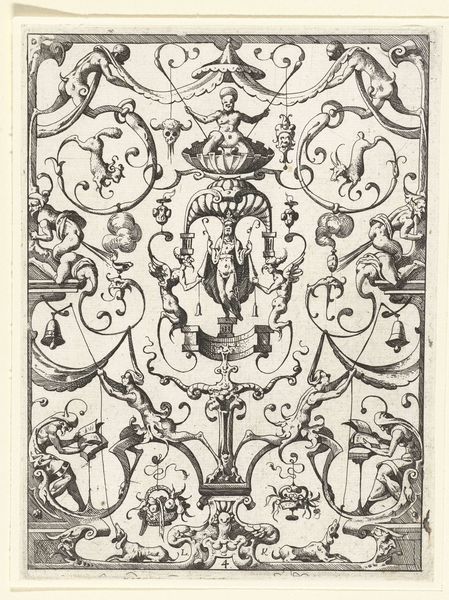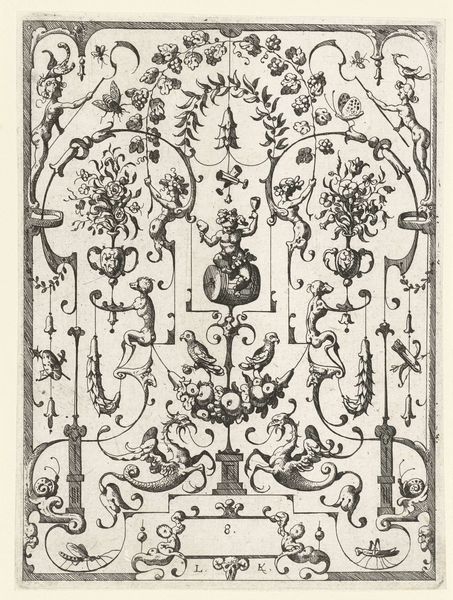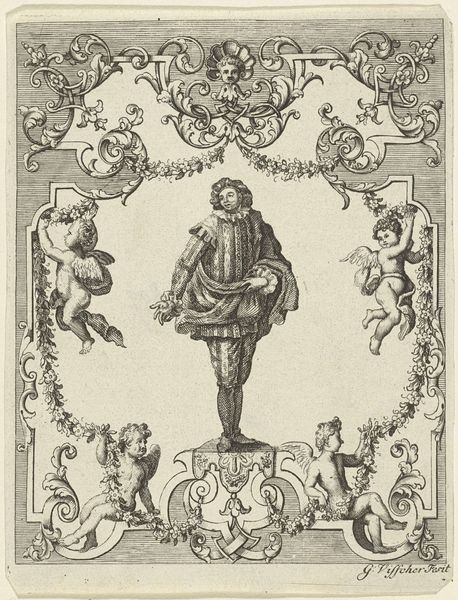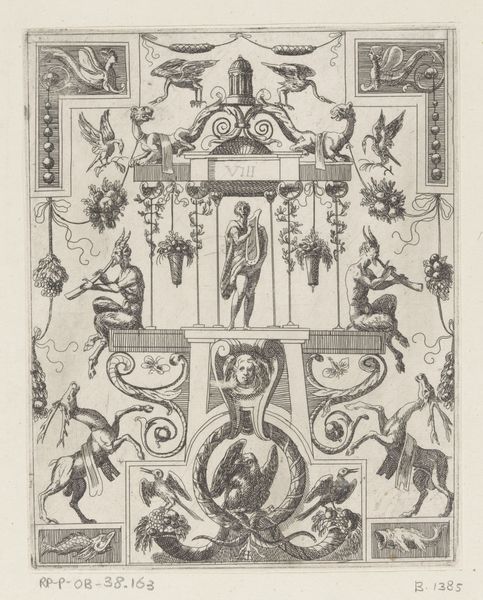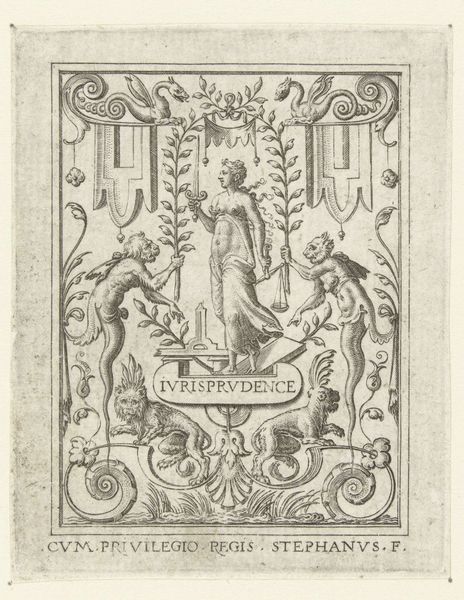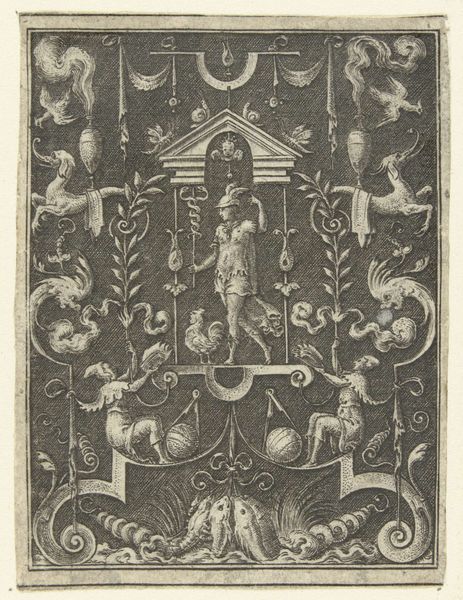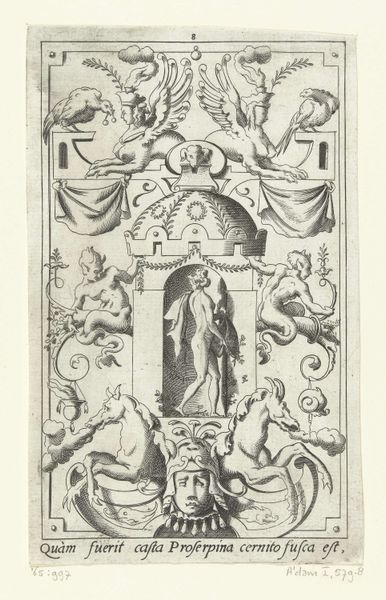
print, engraving
#
allegory
#
baroque
# print
#
figuration
#
history-painting
#
engraving
Dimensions: height 159 mm, width 119 mm
Copyright: Rijks Museum: Open Domain
Curator: Take a look at this engraving from around 1690 to 1710 by Gerrit Visscher. It’s titled “Vrouw met een boeket in de hand in ornamentele omlijsting”—that is, "Woman with a bouquet in hand within an ornamental frame." It is a complex work, overflowing with detail. Editor: My immediate thought is, this feels… celebratory? Like a framed achievement. Curator: Absolutely! Let's consider the materials. Visscher was working with engraving—a painstaking process involving metal plates and sharp tools to create a repeatable image. Prints democratized imagery to a degree; they made art more widely available. This is not some fleeting sketch; it's a produced, multiplied object. Editor: That repeatability speaks volumes, doesn’t it? It takes it away from being just a celebration and toward something almost… propagandistic. Who is this woman, and why should her image be so widely circulated? We can see she's centrally placed, set apart, literally raised upon a dais. Curator: We also have to look at the abundance of other elements: the cherubs, winged figures, decorative cartouches… Baroque art loved to layer meaning like this. The central woman and the objects which surrounds her act as emblems representing virtue, wealth, prosperity, and maybe even dynastic aspirations of her family. The labor involved in its production also connects to consumerism and status within a patriarchal society. Editor: The engraving really showcases the hierarchical structures that the Baroque style reinforced—gods and goddesses, putti with musical instruments flanking the more humble representation of a mortal, as well as that strong female figure. What can we extract from the fact that it is specifically a woman that is glorified? Perhaps the flowers have implications related to women's power and roles? Curator: Precisely! It calls us to think more deeply about the dynamics of patronage and who could afford not just to commission this but to own or circulate copies. It's both celebratory and intensely coded, laden with its own social history. Editor: It feels so far removed from our world, yet the questions it provokes about power, representation, and accessibility remain relevant. Curator: Indeed, by considering how it was made and the context in which it appeared, this print continues to offer up ways to interrogate our own systems of image-making.
Comments
No comments
Be the first to comment and join the conversation on the ultimate creative platform.
